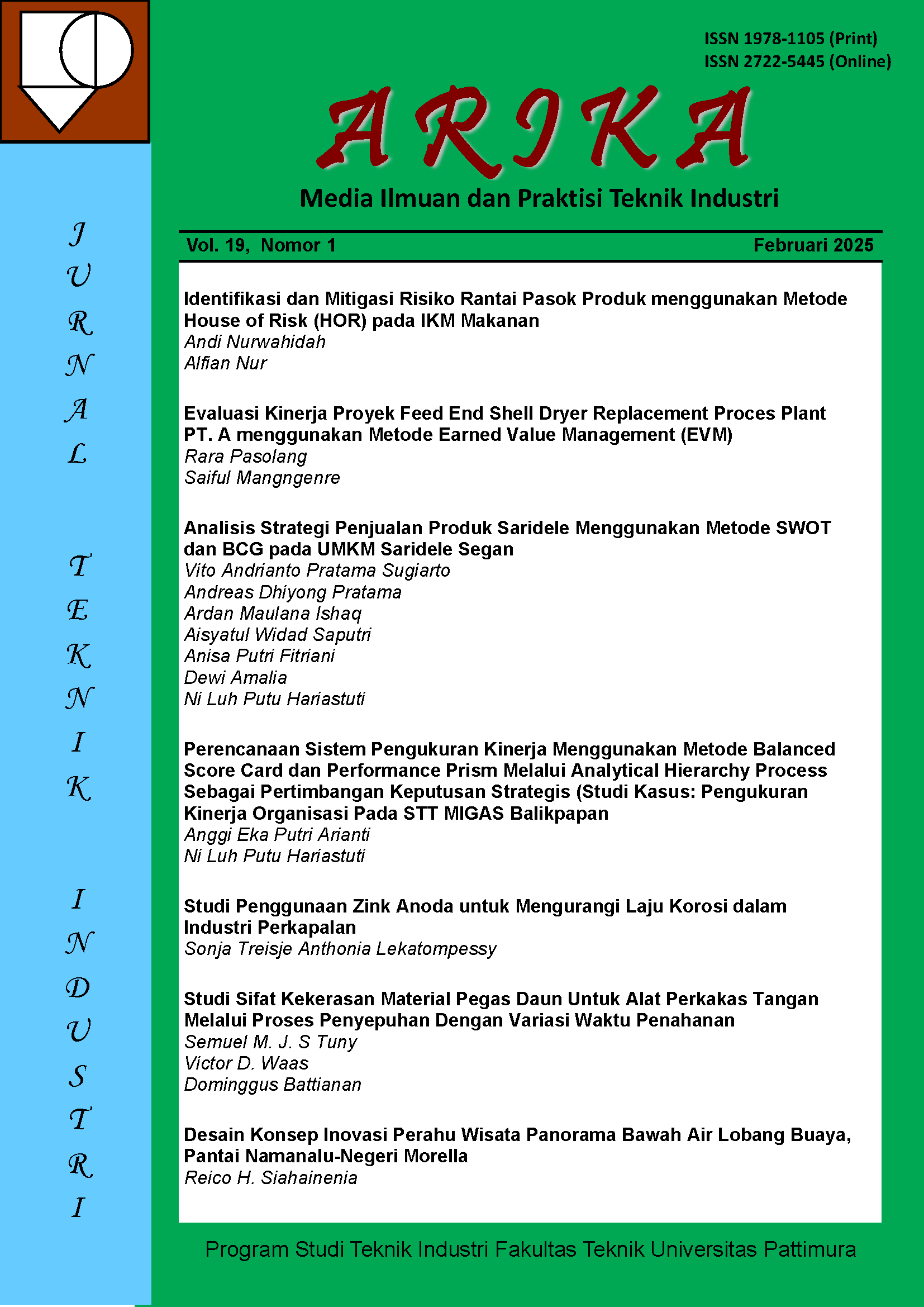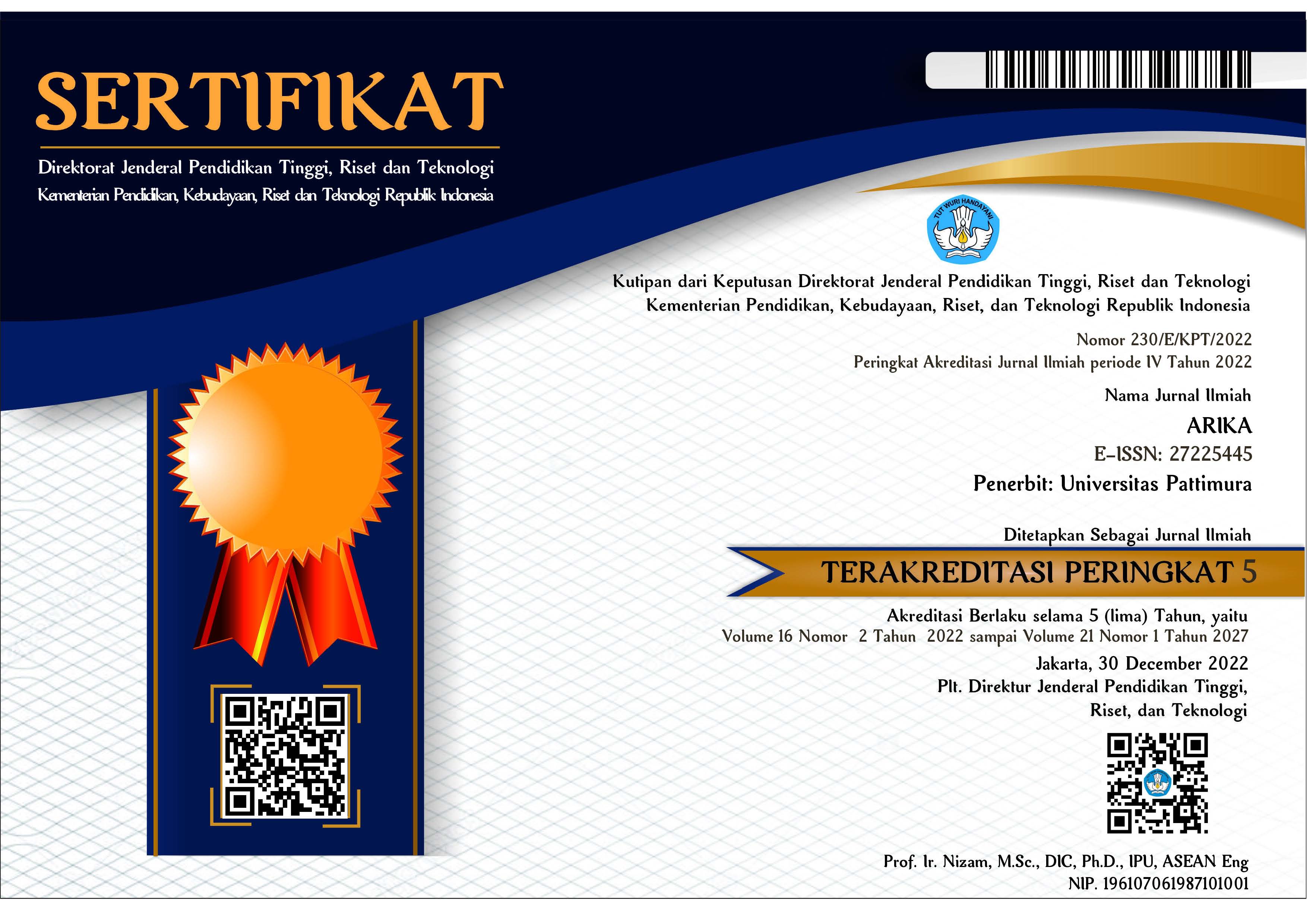Analisis Strategi Penjualan Produk Saridele Menggunakan Metode SWOT dan BCG pada UMKM Saridele Segan
Analysis of Sales Strategy for Saridele Products Using SWOT and BCG Methods at SME Saridele Segan
Abstract
Soy milk is an alternative drink to replace cow's milk, and it is popular because it is highly nutritious. The availability of market opportunities for this substitute product is the basis for designing a business development strategy for Saridele Segan MSMEs through a SWOT analysis approach and the Boston Consulting Group (BCG) matrix. This study aims to formulate strategies and evaluate product positions in a business portfolio based on relative market share and market growth rate. SWOT analysis is used to identify the strengths, weaknesses, opportunities, and threats faced by this MSME. At the same time, the BCG matrix helps determine the optimal strategy for products in the Stars, Cash Cows, Question Marks, and Dogs categories. The study results indicate that Saridele Segan MSMEs are in quadrant 1 of the SWOT matrix and quadrant II of the Question Mark BCG group. The selected strategy refers to the SO strategy. Namely, an aggressive strategy to expand the market by maximizing the potential of superior products through the exploitation of Cash Cows to support investment in Question Marks and increase competitiveness through product innovation and operational efficiency. The integrated SWOT and BCG approach provides a practical strategic framework for the sustainability of Saridele MSMEs in a more competitive market.
Downloads
References
Alam, W. Y., Purnamartha, E., Putri, W., Audina, F., & Kharisma, R. (2024). Analisis SWOT Strategi Pemasaran ( Studi Kasus pada Percetakan Mentari Jaya Dukuh Menanggal Surabaya ). 7(2), 1014–1019.
Bratan, A. A. S., Taan, H., & Ismail, Y. L. (2023). Meningkatkan Retensi Pelanggan Paket Data Internet Telkomsel di Kota Gorontalo melalui Strategi Customer Relationship Management (CRM). Economics and Digital Business, 5(1), 47–56.
Dolo, V. (2025). Analisis Strategi Pada UMKM Dwinta Cake Menggunakan Model Strategi BCG ( Boston Consulting Group ). 2(1), 1932–1939.
Hariastuti, N. L. P., & Mudhofar, M. (2024). Penentuan Strategi Pengembangan Usaha Olahan Ikan Bandeng melalui Penerapan Metode SWOT dan Fuzzy AHP (Studi Kasus: UD. Arshaindo). Journal of Industrial View, 6(1), 43–54. https://doi.org/10.26905/jiv.v6i1.12385
Hasna, M. (2023). Digitalisasi Pengelolaan Sekolah Dasar Negeri Kota Banjarmasin: Tinjauan Analisis SWOT Dalam Strategi Pengembangan Sekolah Digital.
Kusbandono, D. (2019). Analisis Swot Sebagai Upaya Pengembangan Dan Penguatan Strategi Bisnis ( Study Kasus Pada Ud. Gudang Budi, Kec. Lamongan). Jurnal Manajemen, 4(2), 921. https://doi.org/10.30736/jpim.v4i2.250
Lusinta, A. D. A., Titin, T., & Azizah, L. N. (2019). Analisis Segmenting, Targeting Dan Positioning Untuk Merumuskan Strategi Pemasaran Global Pada Ukm Kacang Mede “Bawang Mas” Surabaya. Jurnal Manajemen, 4(2), 907. https://doi.org/10.30736/jpim.v4i2.249
Marsetyorini, A. D., & Solihati, K. D. (2024). Analisis Perencanaan Manajemen Strategi PT Japfa Comfeed Indonesia Menggunakan Matriks SWOT dan Matriks BCG ( Studi Kasus Penurunan Laba Perusahaan Tahun 2022 ). 6(2), 59–70.
Owen Raharjo, R., & Putu Hariastuti, N. L. (2024). ANALISIS STRATEGI PENGEMBANGAN BISNIS TOKO RETAIL DENGAN MENGGUNAKAN QUANTITATIVE STRATEGIC PLANNING MATRIK (QSPM) DAN PENDEKATAN LEAN CANVAS. Industri Inovatif : Jurnal Teknik Industri, 14(2), 200–206. https://doi.org/10.36040/industri.v14i2.10445
Sabili, A., Prima, F., & Wahyudi, T. (2024). Menggunakan Analisis SWOT Dan BCG (Boston Consulting Group) Terhadap Produk Coilland. 8(2), 132–138.
Subhaktiyasa, P. G. (2024). Menentukan Populasi dan Sampel : Pendekatan Metodologi Penelitian Kuantitatif dan Kualitatif. 9, 2721–2731.
Copyright (c) 2025 Vito Andrianto Pratama Sugiarto, Andreas Dhiyong Pratama, Ardan Maulana Ishaq, Aisyatul Widad Saputri, Anisa Putri Fitriani, Dewi Amalia, Ni Luh Putu Hariastuti

This work is licensed under a Creative Commons Attribution-ShareAlike 4.0 International License.
An author who publishes in the ARIKA Jurnal agrees to the following terms:
- The author retains the copyright and grants ARIKA journal the right of first publication of the work simultaneously licensed under the Creative Commons Attribution-ShareAlike 4.0 License that allows others to share the work with an acknowledgment of the work's authorship and initial publication in this journal.
- The author is able to enter into separate, additional contractual arrangements for the non-exclusive distribution of the journal's published version of the work (e.g., post it to an institutional repository or publish it in a book) with the acknowledgment of its initial publication in this journal.
- The author is permitted and encouraged to post his/her work online (e.g., in institutional repositories or on their website) prior to and during the submission process, as it can lead to productive exchanges, as well as earlier and greater citation of the published work (See The Effect of Open Access).










